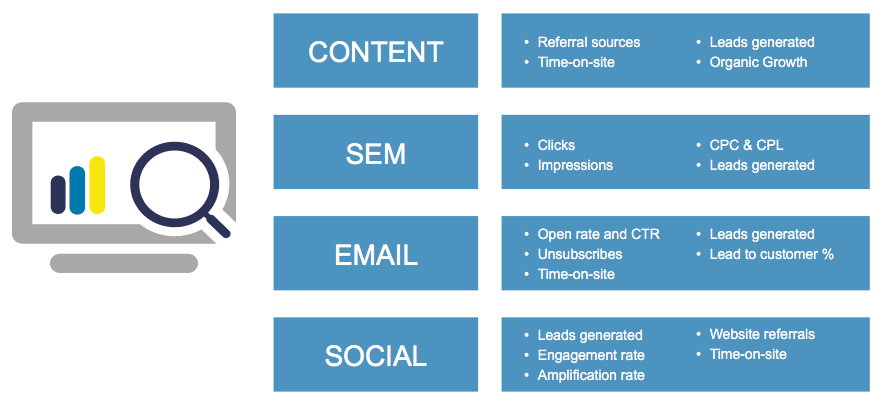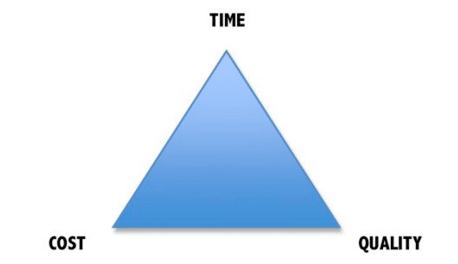Here we are again at the end of another year, ready to start a new one. With 2016 around the corner, many businesses have already begun planning new growth objectives and figuring out how to achieve those objectives. Alongside this planning also includes what your marketing strategy will include and how it will help aid your upcoming initiatives.
As I begin writing this blog post, I can’t help but think of these two specific groups of people:
- Business Owners – The pressures of pushing for revenue growth is always top of mind and paving the path of “how” to get there is where most of the efforts come in. As such, taking the necessary steps to prepping your marketing strategy will play a crucial role in fostering sales. Instead of focusing on all of the marketing executions you can do, be specific with three to five implementations. This will ensure you do not get overwhelmed and that you actually meet certain milestones that yield progress as well as positive key performing indicators (KPIs).
- Aspiring Entrepreneurs – Imagine this scenario… You wake up every morning with a dreaded feeling of having to go work for someone else and build their dreams while yours take a backseat. Every day you tell yourself, “Tomorrow is the day; I’ll start working on my own dream tomorrow.” The same cycle continues as tomorrow becomes today and you continue on with the same routines of working for someone else. Sound familiar? I was in the same exact position. I recall having the drive, motivation and inspiration, but was missing the most important key factors: purpose and action. Get rid of your fears, focus on what you can control and the role marketing will play in helping you reach your ultimate goal of running your own business.
No matter which role you fall into, here are five surefire steps to help prep your marketing strategy for 2016:
1) Lay out a clear strategy
One of the most common things I hear when I ask people what they’re looking to do achieve is, “I just want more sales and know that I need to do marketing to build my brand.” Not very specific, right? Narrow in on what you want to achieve and ensure that you are as concise as possible. Here are a few examples:
- “I want to grow market share by 20% in 2016.”
- “I want to grow sales by 200% and do so by executing inbound marketing that will generate high-quality leads, awareness and position my product in the marketplace.”
2) Lay out tangible tactics
Once you’ve laid out a clear strategy, determine which tactics need to be implemented first. For example, let’s say your strategy is to grow sales by 200% with inbound marketing. Specific and tangible tactics would be:
- Content Marketing – The first place to start is to lay out topical ideas (note: do research!) that are currently trending within your industry, map out a content calendar, and input a process for content creation.
- SEO – With great content comes the need for optimization. Make sure your website is optimized with relevant keywords and phrases. Implement keyword research and narrow in on the additional 50-100 keywords you plan to gain market share with. Get even more specific by highlighting which keywords are lead producing, sales converting and traffic producing. This will also help with segmentation.
- Social Media – This is a great avenue to share and market your content. The key to success with social media is to not only make it a one-way street where you only share your own content, but to also curate and participate in existing conversations.
- SEM – The fastest way to promote your content, products and services is through paid search or social media ads. Start small by testing what works before you dedicate a higher budget. More importantly, if you already know who your exact customer is, make sure you position your ads accordingly by tying them in with targeted landing pages.
- Email – Segmentation and automated drip campaigns are essential. Leverage email marketing to also test messaging that assist with higher retention rates, grow sales and incur leads.
3) Be specific on metrics you will track
Making decisions based on analytics will surely help foster your overall marketing strategy. Here’s an example of metrics you should be tracking:

4) Have a dedicated budget
There’s nothing more disappointing than to hear a business owner/CEO tell me that they don’t know what their budget is or that it is unlimited. Not only does this show me that they aren’t mature enough to figure out how much they need to allocate to their marketing efforts, but that they are not transparent. The start of any of the relationships I have with my clients have to begin with transparency; otherwise, building trust becomes difficult.
In a previous blog post, I highlighted the following as great rule of thumb to follow:
Consider the triangle as depicted below.

The concept is easy and simple to understand such that there is a trade off and you can only have two. For instance,
- Time + Cost = a project done quickly and cheaply, but the Quality may suffer.
- Quality + Time = an outstanding project delivered quickly, but it will Cost more.
- Cost + Quality = great work at a reasonable cost, but with plenty of Time to complete it.
5) Be flexible to pivot when needed
Change is inevitable with any business, so making sure you set up a marketing strategy that’s flexible enough to pivot when needed is important. For instance, let’s say you publish five pieces of content and only one drives engagement, while generating high-quality leads for sales initiatives – knowing this means that regardless of what the content calendar states with future posts, you should pivot your content development to meet the demands of readers.
Lastly, here are a few resources to help you:





